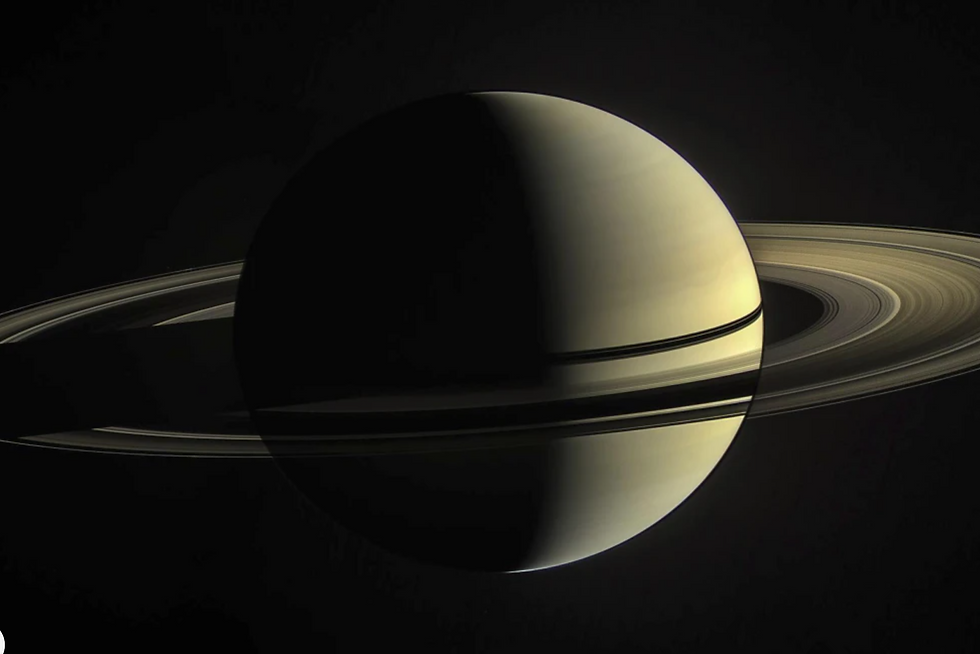Exploring the Mysteries of Space and the Potential of Mars as Our Next Home
- NewsBlend360

- May 23
- 4 min read

By NEWS BLEND 360
Updated 1:56 AM EDT, May 23, 2025
Space has always sparked a sense of wonder among humanity. It invites us to ponder the vastness of the universe and our place within it. From the shining stars to the intricate designs of distant galaxies, our exploration of the cosmos has revealed captivating phenomena. Among these celestial wonders, planets have particularly intrigued us, with Mars taking center stage as a candidate for our next home. Let's explore the mysteries of space and why Mars could be our future.
The Majestic Vastness of Space
Space is an incredible expanse filled with countless celestial bodies. When we look up from our Earth, we find a night sky studded with stars. Astronomers estimate there are about 100 billion galaxies in the observable universe, and within each galaxy, there are millions, if not billions, of stars.
Beyond our familiar planet lies a treasure trove of knowledge about the cosmos. Space studies reveal how stars form and die and the mechanics of galaxies. These discoveries often lead to more questions, highlighting the many mysteries that remain unsolved. For instance, the recent observation of gravitational waves has opened up new paths in understanding cosmic events, showcasing just how much we're still learning.
The Fascination with Planets
Among numerous objects in space, planets capture our imagination the most. They range widely in size, atmosphere, and distance from their stars. Our solar system houses eight unique planets, each offering distinct insights.
Earth is currently the only known planet capable of sustaining life. This fact underscores its significance. But other planets like Jupiter, with its massive storms, or Saturn, renowned for its stunning rings, spark our curiosity just as much. Each planet tells a unique story of formation and survival, providing valuable clues about the processes that shape our universe. For example, studying Venus' thick atmosphere helps scientists understand climate change dynamics, relevant to Earth's future.
Mars: The Red Planet
Mars stands out among these planets. Its reddish hue, caused by iron oxide (or rust) on its surface, has long intrigued scientists. One of Mars’ most significant features is its slightly longer day compared to Earth, lasting 24 hours and 37 minutes. This similarity, combined with evidence of water in the form of polar ice caps, positions Mars as a top candidate for future exploration.
Scientists have found traces of ancient riverbeds, indicating that Mars had a climate conducive to life millions of years ago. The possibility of discovering microbial life, which could have existed in those ancient conditions, makes Mars an exciting target for scientific inquiry.
The Quest for Life on Mars
The quest to find life on Mars continues to captivate scientists and enthusiasts alike. NASA's Perseverance rover is one of the most advanced missions, designed to seek signs of past microbial life. Equipped with sophisticated technology, it analyzes the Martian soil and atmosphere.
In addition to life detection, these missions explore the planet's geology. For instance, by studying Martian rocks, scientists hope to gain insights into the planet’s history and its capacity to support life. These investigations contribute to understanding how life could adapt in extreme conditions.

The Potential for Human Settlement
As we look ahead, the thoughts of establishing human colonies on Mars seem more realistic. Organizations like SpaceX are developing ambitious plans to make this a reality. The idea of living on another planet presents significant opportunities. For example, Mars has resources like water ice that could support human life, alongside possible minerals for construction and energy.
Innovative technologies are being designed to create habitats on Mars and life support systems. These include systems for water purification, oxygen production, and sustainable food sources. However, overcoming the harsh Martian environment, such as temperatures that can plunge to -195 degrees Fahrenheit, is essential for successful colonization.
Challenges of Martian Living
Settling on Mars comes with formidable challenges that demand innovative solutions. The Martian atmosphere consists of over 95% carbon dioxide and only about 0.13% oxygen, making it unbreathable. Furthermore, the extreme temperatures and radiation from space pose additional risks.
Scientists are hard at work developing methods to extract oxygen from carbon dioxide and create sustainable ecosystems. Additionally, constructing adequate radiation protection will be crucial to safeguard human explorers. Addressing these challenges is vital for making a human presence on Mars a reality.
Paving the Way for Future Explorations
Exploration of space and the potential for Mars being our next home are at the forefront of a remarkable journey. The vastness of our universe and Mars's unique characteristics offer us a chance for unparalleled scientific discovery and deeper insights into our existence.
As we nurture our curiosity and harness technology, the day may not be far off when humanity reaches its neighboring planet. This journey can lead to extraordinary opportunities for expansion, research, and understanding our place in the cosmos. The dream of human life on Mars symbolizes hope, exploration, and the relentless spirit of innovation.
In conclusion, the possibility of life on Mars marks an exciting chapter in our exploration of the universe, brimming with opportunities and questions that inspire human progress.


Comments